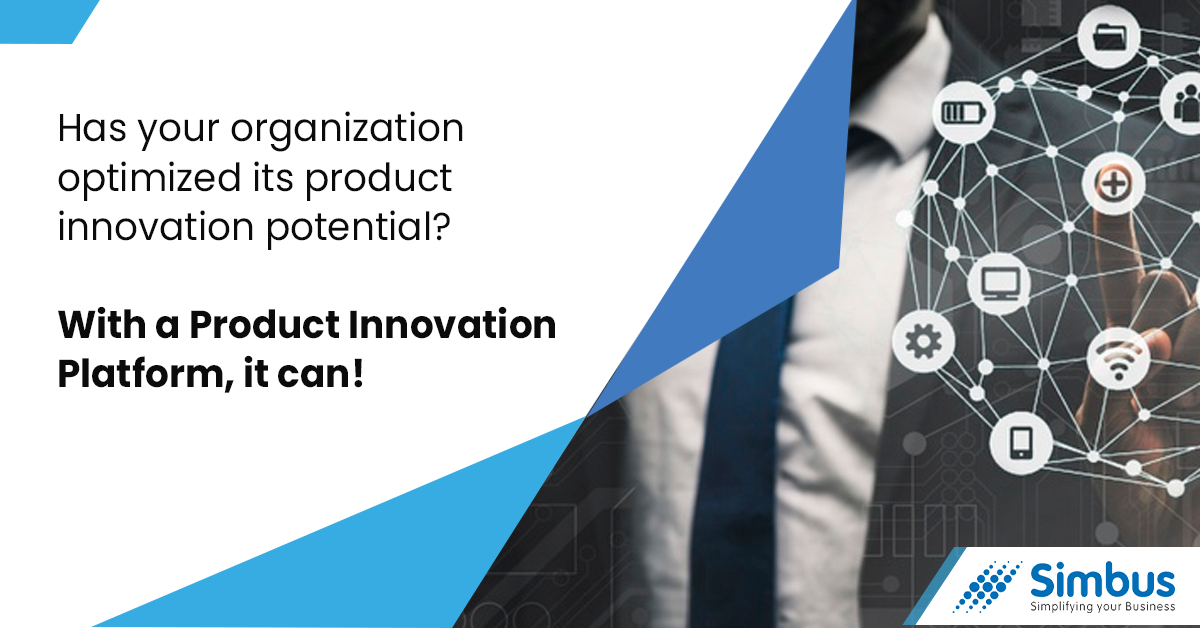In today’s uncertain world, organizations need to continuously innovate to survive and stay ahead of their competition. This pursuit of innovation has created a need for more complex and smart products in the market. In particular, for retailers, this has meant an increase in the variety of products to be developed, together leading to the rise of the Product Innovation Platform. According to the IDC, a market intelligence firm, the Product Innovation Platform (PIP) is “a unified, global product design system that’s designed to bring in all the different areas where innovation is coming from.” This, it says, includes audiences outside the organization that contribute to innovation, even its customers. The PIP, therefore, is an essential tool for any organization to achieve success in the stages leading up to introducing new products in the market.
For time immemorial, organizations have been using Product Lifecycle Management (PLM) software to develop and introduce new products in the market. PLM continues to be the undisputed champion in this regard today. However, current business environment conditions require that PLM software have a component that allows for innovation in the planning process. According to Gartner, a global research and advisory firm, a PLM software without a PIP component today most likely suffers from the following shortcomings:
We have established the importance of PIP in the production process of organizations. But where can organizations get their PIP?
There isn’t a need to look further than PLM Software. A Retail PLM software offers an innovative range of PLM technologies for all types of retail businesses, from speciality to multi-category and other consumer goods. It manages the entire product life cycle from planning assortments to creating and sourcing products, to finally when the consumer gets them in their hands. The question that remains, however, is how does a PLM enable product innovation?
Here is why a PLM is the best for product innovation for any retailer:
Increases product introduction success
With, users can centralize merchandise development plans, gain visibility, and establish targets earlier, thereby removing all guess-work from new product launches. It also gives easy visibility to users to see complex product mixes across various assortments to identify opportunities to design and develop products that their consumers will love.
Boosts product innovation
With highly visual technologies, PLM enables designers, technical and production teams, and also suppliers in some cases, to co-create products. This helps boost the flow of creativity. This helps organizations create winning products that will keep their customers happy, drive sales, and assist in retaining market leadership. Retail PLM software is, therefore, the backbone of any product innovation strategy.
Enables customer interaction
PLM’s collection of various flexible and easy-to-use, product-centric modules and mobile applications help retailers bring in the customer’s perspective in their decision making. They can do this through product personalization, after-sales service, or even improvements in product quality. The Retail PLM provides foundations for retailers to accomplish all these goals, achieve customer intimacy and boost customer satisfaction.
Allows for more SKUs
Perhaps as important as innovating, if not more, is ensuring that the final product is of the best quality and design. This can only be done if the organization reviews hundreds of thousands of prototypes since the average retention rate is often as low as 10 per cent. A PLM gives the team this power. With PLM, a single user can create hundreds of SKUs and efficiently manage requests for designs and samples.
Streamlines product development
IDC’s definition of a PIP, as we spoke about earlier, emphasised the importance of the number of “areas” from where innovation comes in. The process of product innovation and development is often complicated, with multiple stakeholders participating at any given moment. Whether it is a collaboration of teams internally or with external parties, there is a need for a reliable platform to maximize efficiency and effectiveness of the team. PLM is one such platform. With a PLM, organizations have a single source of the truth – there is no longer a need for paper files, spreadsheets, emails, or manual data entry – all of which can lead to costly mistakes and cases of miscommunication. This is an environment conducive to innovation.
The Retail PLM software is a real game-changer for organizations looking to advance their product innovation capabilities. The proof is in the numbers – it has the highest user adoption and customer satisfaction rate in the industry. Big names in fashion retail like Louis Vuitton, Tommy Hilfigher and Calvin Klein, and retailers like Swarovski, Auchan and TESCO are a testament to this. They, along with 1200+ brands across 360+ other companies all over the world, rely on PLM to get more innovative products, in more categories, to more markets and channels, faster.
Learn more about PLM’s capabilities here. Has your organization optimized its product innovation potential? Speak to a PLM expert here to find out!
For time immemorial, organizations have been using Product Lifecycle Management (PLM) software to develop and introduce new products in the market. PLM continues to be the undisputed champion in this regard today. However, current business environment conditions require that PLM software have a component that allows for innovation in the planning process. According to Gartner, a global research and advisory firm, a PLM software without a PIP component today most likely suffers from the following shortcomings:
- Lack of adequate involvement in the early innovation, design, and development
- S&OP and NPI processes not aligned to provide adequate business value
- Unneeded complexity created by piecemeal, product by product, NPD and NPI
We have established the importance of PIP in the production process of organizations. But where can organizations get their PIP?
There isn’t a need to look further than PLM Software. A Retail PLM software offers an innovative range of PLM technologies for all types of retail businesses, from speciality to multi-category and other consumer goods. It manages the entire product life cycle from planning assortments to creating and sourcing products, to finally when the consumer gets them in their hands. The question that remains, however, is how does a PLM enable product innovation?
Here is why a PLM is the best for product innovation for any retailer:
Increases product introduction success
With, users can centralize merchandise development plans, gain visibility, and establish targets earlier, thereby removing all guess-work from new product launches. It also gives easy visibility to users to see complex product mixes across various assortments to identify opportunities to design and develop products that their consumers will love.
Boosts product innovation
With highly visual technologies, PLM enables designers, technical and production teams, and also suppliers in some cases, to co-create products. This helps boost the flow of creativity. This helps organizations create winning products that will keep their customers happy, drive sales, and assist in retaining market leadership. Retail PLM software is, therefore, the backbone of any product innovation strategy.
Enables customer interaction
PLM’s collection of various flexible and easy-to-use, product-centric modules and mobile applications help retailers bring in the customer’s perspective in their decision making. They can do this through product personalization, after-sales service, or even improvements in product quality. The Retail PLM provides foundations for retailers to accomplish all these goals, achieve customer intimacy and boost customer satisfaction.
Allows for more SKUs
Perhaps as important as innovating, if not more, is ensuring that the final product is of the best quality and design. This can only be done if the organization reviews hundreds of thousands of prototypes since the average retention rate is often as low as 10 per cent. A PLM gives the team this power. With PLM, a single user can create hundreds of SKUs and efficiently manage requests for designs and samples.
Streamlines product development
IDC’s definition of a PIP, as we spoke about earlier, emphasised the importance of the number of “areas” from where innovation comes in. The process of product innovation and development is often complicated, with multiple stakeholders participating at any given moment. Whether it is a collaboration of teams internally or with external parties, there is a need for a reliable platform to maximize efficiency and effectiveness of the team. PLM is one such platform. With a PLM, organizations have a single source of the truth – there is no longer a need for paper files, spreadsheets, emails, or manual data entry – all of which can lead to costly mistakes and cases of miscommunication. This is an environment conducive to innovation.
The Retail PLM software is a real game-changer for organizations looking to advance their product innovation capabilities. The proof is in the numbers – it has the highest user adoption and customer satisfaction rate in the industry. Big names in fashion retail like Louis Vuitton, Tommy Hilfigher and Calvin Klein, and retailers like Swarovski, Auchan and TESCO are a testament to this. They, along with 1200+ brands across 360+ other companies all over the world, rely on PLM to get more innovative products, in more categories, to more markets and channels, faster.
Learn more about PLM’s capabilities here. Has your organization optimized its product innovation potential? Speak to a PLM expert here to find out!





